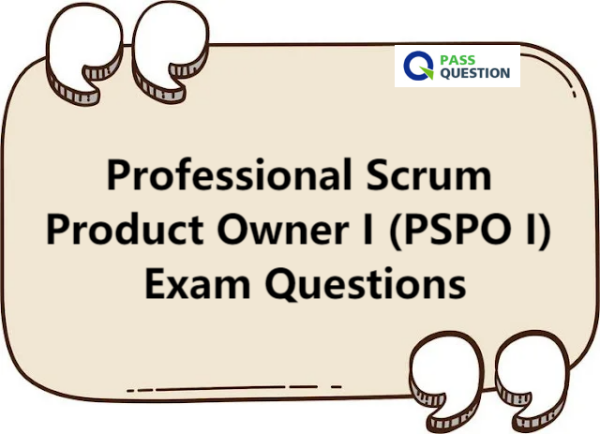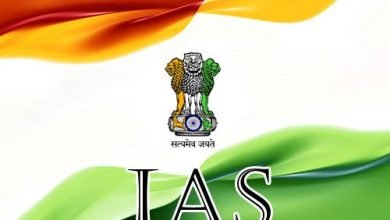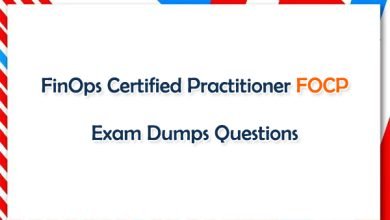Professional Scrum Product Owner I (PSPO I) Exam Questions

Professional Scrum Product Owner I (PSPO I) Exam is an entry-level Scrum certificate, heavily focused on the theory of the Scrum Guide. PassQuestion offers you real Professional Scrum Product Owner I (PSPO I) Exam Questions that you will come across during your Scrum PSPO-I examination. You will get ideas on taking and successfully passing the Professional Scrum Product Owner (PSPO I) exam to achieve the Professional Scrum Product Owner Certification. After studying our Professional Scrum Product Owner I (PSPO I) Exam Questions, you will be more confident to pass your PSPO-I exam successfully.

Professional Scrum Product Owner I (PSPO I) Exam
The Professional Scrum Product Owner (PSPO I) certification validates your knowledge of the Scrum framework and your ability to support and enable value creation and delivery. Earning PSPO I shows your understanding of how to bridge the gap between strategy and agile product management in order to create valuable products using Scrum.
People that have passed PSPO I and achieved certification demonstrate a fundamental understanding of the Scrum framework, and how to apply it to maximize the value delivered with a product. They exhibit a dedication to continued professional development, and a high level of commitment to their field of practice. Achieving PSPO I is the minimum demonstration of knowledge any Professional Scrum Product Owner should be able to make.
PSPO I ensures you have a fundamental understanding of the accountabilities of the Product Owner. Many questions focus on the Product Owner accountabilities based on the Scrum Guide and also the application of Scrum based on your own experience.
Read More: Uncommon ways to Stay focused
Exam Information
Cost: $200 USD per attempt
Passing score: 85%
Time limit: 60 minutes
Number of Questions: 80
Format: Multiple Choice, Multiple Answer, True/False
Exam Topics
Understanding and Applying the Scrum Framework:
Empiricism, Scrum Team, Events, Artifacts, Done
Developing People and Teams:
Self-Managing Teams
Managing Products with Agility:
Forecasting & Release Planning, Product Vision, Product Value, Product Backlog Management, Business Strategy, Stakeholders & Customers
Also Read: How Can I Get The Best Law Assignment Help Online?
View Online Professional Scrum Product Owner I (PSPO I) Free Questions
1. Which description best fits the role of the Product Owner?
A. Scope Protector.
B. Chief Business Analyst.
C. Value Maximizer.
D. Requirements Collector.
E. Project Manager 2.0.
Answer: C
2. The Developers find out during the Sprint that they are not likely to build everything they forecast. What would you expect a Product Owner to do?
A. Cancel the Sprint.
B. Skip Product Backlog refinement activities.
C. Change the Sprint Goal.
D. Inform management that more resources are needed.
E. Re-negotiate the selected Product Backlog items with the Developers.
Answer: E
3. How do timeboxes help the Product Owner and the other members of the Scrum Team validate assumptions, adapt, and maximize the value of their product?
A. At the end of each Sprint when the timebox expires a detailed report with all test cases and test results is available.
B. Timeboxes assure the Product Owner that the Developers will finish all work on the Sprint Backlog by the end of the Sprint.
C. Timeboxes help by making sure a Sprint does not stop until all testing is done, and the work is verified by the Product Owner.
D. Timeboxes help minimize risk by creating the opportunity to validate assumptions using feedback from users and the market; allowing Scrum Teams to inspect progress toward the Product Goal and decide whether to pivot or persevere.
Answer: D
4. To what extent does technical debt limit the value a Product Owner can get from a product? (Two answers)
A. The velocity at which new functionality can be created is reduced when you have technical debt.
B. Technical debt causes a greater percentage of the product’s budget to be spent on maintenance of the product.
C. Technical debt does not influence the delivery of value.
D. Technical debt is not a Product Owner concern, because technical debt is only an issue for the Development Team.
Answer: AB
5. A Product Owner is entitled to postpone the start of a new Sprint after the conclusion of a previous Sprint for the following reason:
A. The Product Owner has not identified a Sprint Goal.
B. The Quality Assurance department needs more time to make the previous Increment “Done”.
C. There is no acceptable reason. A new Sprint starts immediately after the conclusion of the previous Sprint.
D. Not enough Product Backlog items are “Ready”.
E. The stakeholders are not happy with the value produced in the previous Sprint.
Answer: C
6. What best describes the relationship of the Product Owner and the stakeholders?
A. The Product Owner writes the User Stories as provided by the stakeholders.
B. The Product Owner provides the stakeholders with acceptance forms at the Sprint Review to record their formal agreement over the delivered software.
C. The Product Owner has the final call over the requirements and should involve the stakeholders as little as possible.
D. The Product Owner actively asks for stakeholder input and expectations to incorporate into the Product Backlog.
Answer: D
7. Which of the following are needed in order to allow Sprint Planning to begin? (Two answers)
A. Formal budget approval to conduct another Sprint.
B. A Product Backlog with the most important items ready for discussion.
C. A clear cadence of when the Daily Scrum will take place.
D. A clear and non-negotiable Sprint Goal.
E. A fully refined Product Backlog.
f) A Product Goal communicated by the Product Owner.
Answer: BF
8. It is mandatory for the Product Owner to monitor and share progress of the Product Backlog by using which method?
A. A Product or Release burn-down chart.
B. A Value burn-up chart.
C. A Gantt chart.
D. Any practice based on trends of work completed and upcoming work.
E. A Sprint Review acceptance report.
Answer: D
9. What phrases best describe the relationship of the Product Owner and the Developers? (Two answers)
A. They collaborate often so the Product Owner can make informed decisions in balancing effort and value of Product Backlog items.
B. They should share no more than the Sprint Planning and the Sprint Review meeting.
C. They should work apart as much as possible in order to keep the concerns of business and technology separated.
D. The Product Owner should be with the Developers full-time to grow a deep understanding of the technology being used.
E. They collaborate often so the Developers build Increments keeping end-user and stakeholder concerns in mind.
Answer: AE
10. What are typical activities for a Product Owner in a Sprint? (Two answers)
A. Create financial reporting upon the spent hours reported by the Scrum Team.
B. Collaborate with stakeholders, user communities, and subject matter experts.
C. Work with the Developers on Product Backlog refinement.
D. Update the work plan for the Developers on a daily basis.
E. Attend every Daily Scrum to answer functional questions on the discussed Sprint Backlog items.
Answer: BC




